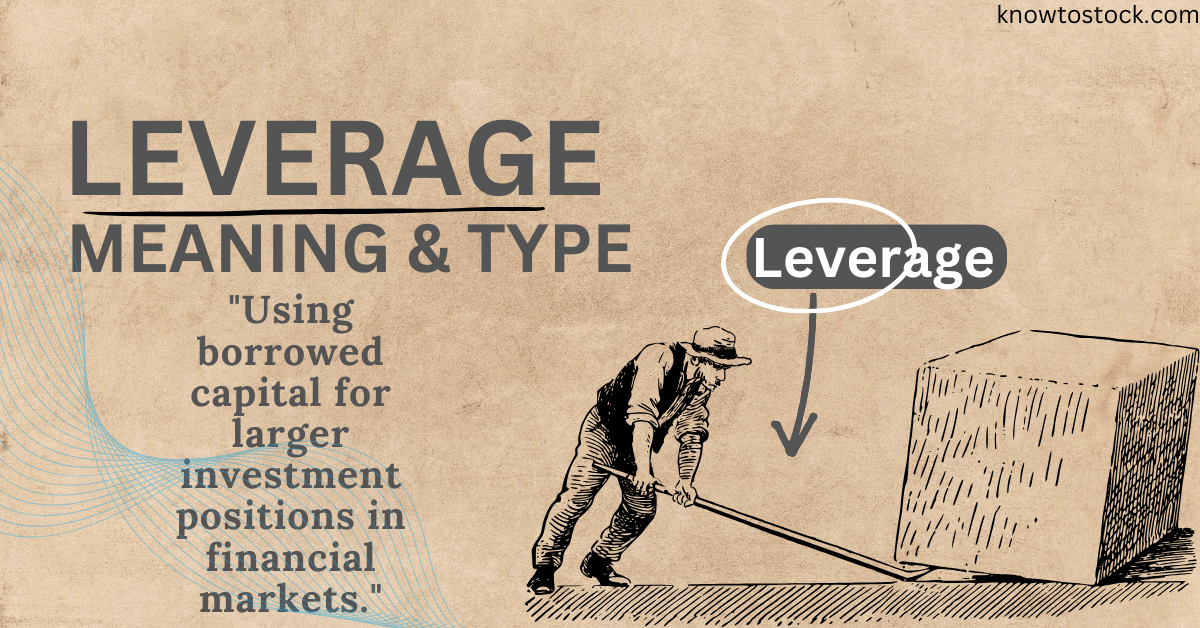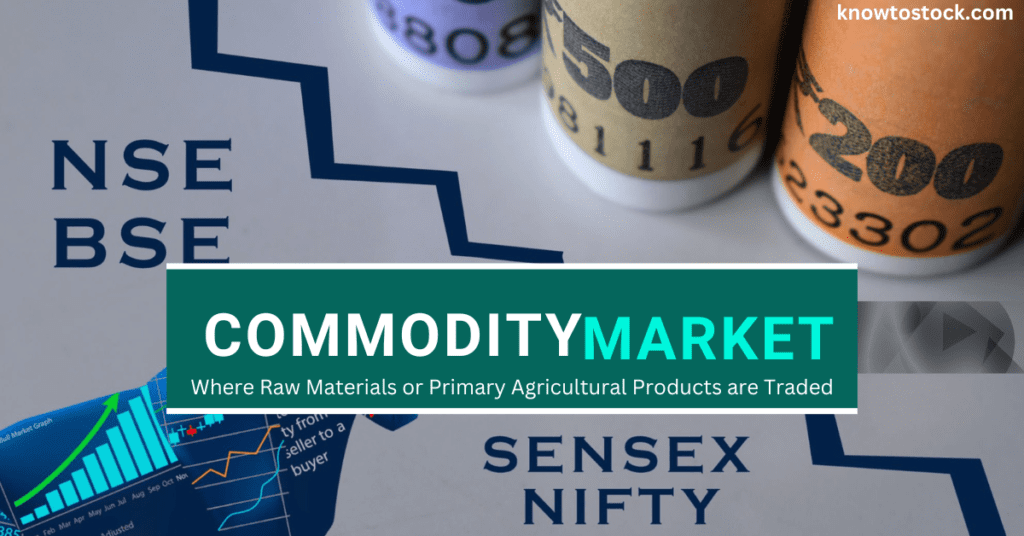Leverage in stock market meaning is using borrowed funds to amplify potential returns or losses.Using this can multiply your capit of 10k into 50k Rs but using Leverage can also multiply your loss in trading,we will disuss later about risk of leverage in stock market meaning in this article with examples.But for now, If you are beginner in stock market then stay away from leverage and gether the information first.
What is Leverage?
Leverage in the stock market meaning refers “to the use of borrowed funds to increase the size of a trading position or investment” beyond what would be possible with one’s own capital alone.By using borrowed capital, investors can increase their exposure to assets beyond their initial investment.In simple words, leverage is trading on margin, where an investor borrows money from a brokerage to buy additional shares of a stock.
Origin of Leverage is from Lever word which means-” Amplifying the Input Force to provide a Greater Output Force.”
Therefore,Leverage is a Dept that is provided by brokerage applications to multipy your capital so that you can make more profit by increasing the size of position(number of Lots or Shares) in stock market.You can multiply your margin upto 5 times depending on your brokerage applications you are using to buy or sell stocks.
However,Leverage can amplify both gains and losses, and it involves borrowing money to invest in securities.But it also heightens the risk, as losses are similarly magnified. It’s a strategy that demands careful consideration and risk management due to the increased financial exposure or investement and potential for significant financial swings.
Types of Leverage in Stock Market:
-
Operating Leverage:-
Operating leverage refers to the degree to which a company uses fixed costs in its operations, as opposed to variable costs.
How it Works: When a company has high fixed costs and low variable costs, a small change in sales can result in a significant change in profits. This is because fixed costs remain constant, and any increase in sales directly contributes to higher profits.
Example: A manufacturing company with high fixed costs for machinery and facilities would exhibit high operating leverage. If the company experiences an increase in demand for its products, the additional revenue contributes significantly to profit due to the fixed costs already in place. -
Financial Leverage:-
Definition: Financial leverage involves using borrowed capital, such as loans or debt, to increase the potential return on an investment.
How it Works: By using borrowed funds, an investor or a company can amplify the size of their investment and potentially enhance returns. However, it also increases the level of risk, as losses are magnified when using borrowed money.
Example: In the stock market, an investor may use margin (borrowed money from a broker) to purchase more shares than they could with their own capital. If the stock price rises, the returns are higher, but if it falls, the losses are also greater. -
Combined Leverage:-
Definition:“combined leverage” describes the application of both operating and financial leverage to raise possible returns on investments. It entails investing in projects or buying assets using a combination of fixed costs and borrowed finance.
Example: An example of combined leverage would be if a business borrowed money to purchase a new factory and rented an existing one, expecting the income from the usage of leverage to cover the fixed costs and interest on the debt.
Types of Financial Leverage:[Leverage in Stock Market Meaning]
Financial Leverage can further be divided into two categories:-
- Non-Leverage Market:-You can use your own funds to invest if you choose to purchase shares through the equity market; no leverage will be given to you while purchasing stock.
- Leverage Market:- Brokers in this market provide plentiful leverage to traders, enabling them to amplify their trading positions and potentially enhance profits in the stock market.
However, it’s crucial for traders to exercise caution and prudence, as increased leverage also heightens the risk of significant losses, and market fluctuations can lead to margin calls, necessitating careful risk management strategies.
Leverage Market Types:
Let us see which category provide maximum Leverage to Trade:-
- Intraday Trading Leverage:-In intraday trading, traders have the opportunity to access leverage up to 5 times their capital, allowing them to control positions in the market that exceed the amount of their own funds. This increased leverage, often expressed as a ratio such as 5:1, empowers traders to amplify potential profits based on market movements.
- Future Trading Leverage:- Trading futures provides traders with a special chance to obtain leverage greater than 5 times their initial capital investment. Leverage in futures trading is typically expressed as a ratio, such as 10:1, indicating the multiple by which the trader can amplify their investment.
- Option Trading Leverage:-Traders that participate in options trading have a unique chance to utilize substantial leverage often up to 20 times their initial investment. Financial contracts known as options give their holder the right, but not the responsibility, to purchase (call) or sell (put) an underlying asset at a fixed price within a given period of time.
- Commodity Leverage:-“Traders engaging in commodity trading have a distinctive opportunity to employ significant leverage, often allowing them to control positions up to 20 times their initial investment.”

The commodity market is a financial market where raw materials or primary agricultural products are traded. It is a marketplace where buyers and sellers can engage in the exchange of physical commodities or derivatives contracts based on those commodities. The commodities traded in these markets can be broadly categorized into two main types:
Hard Commodities: These include physical goods like gold, silver, oil, natural gas, metals (such as copper and aluminum), and agricultural products (such as wheat, corn, soybeans, and cotton).
Soft Commodities: This category encompasses agricultural products and livestock, including items like coffee, cocoa, sugar, livestock (cattle, hogs), and other perishable goods.
5.Forex Trading:-The forex (foreign exchange) market is a global decentralized or over-the-counter (OTC) market where participants trade currencies. It is the largest and most liquid financial market in the world, with a daily trading volume that exceeds $6 trillion.The forex market operates 24 hours a day, five days a week, allowing for continuous trading across different time zones.
Forex allows for a high level of leverage, up to 500 times. This means that for every dollar you have, you can potentially control $500 worth of a currency. While this can amplify potential profits, it also increases the risk because losses can be magnified too. So, using leverage in forex requires caution and understanding the risks involved.
Also Learn:-Types of Trading.
Conclusion:
When assessing a company’s fundamentals, investors and stock traders need to understand financial leverage. With operating, financial, and combined leverage available, organizations can use a variety of methods to accomplish their objectives.[Leverage in Stock Market Meaning]
In the stock market, the extent of leverage a company adopts is influenced by various factors such as its size, the industry it operates in, competition dynamics, and financial objectives. Utilizing borrowed funds, or leverage, in the stock market can potentially boost returns and offer tax advantages. However, it also introduces risks, notably the possibility of default on borrowed funds and the obligation to make interest payments. Companies need to carefully weigh these pros and cons when deciding on their leverage levels, considering the potential benefits against the inherent risks in the stock market.



